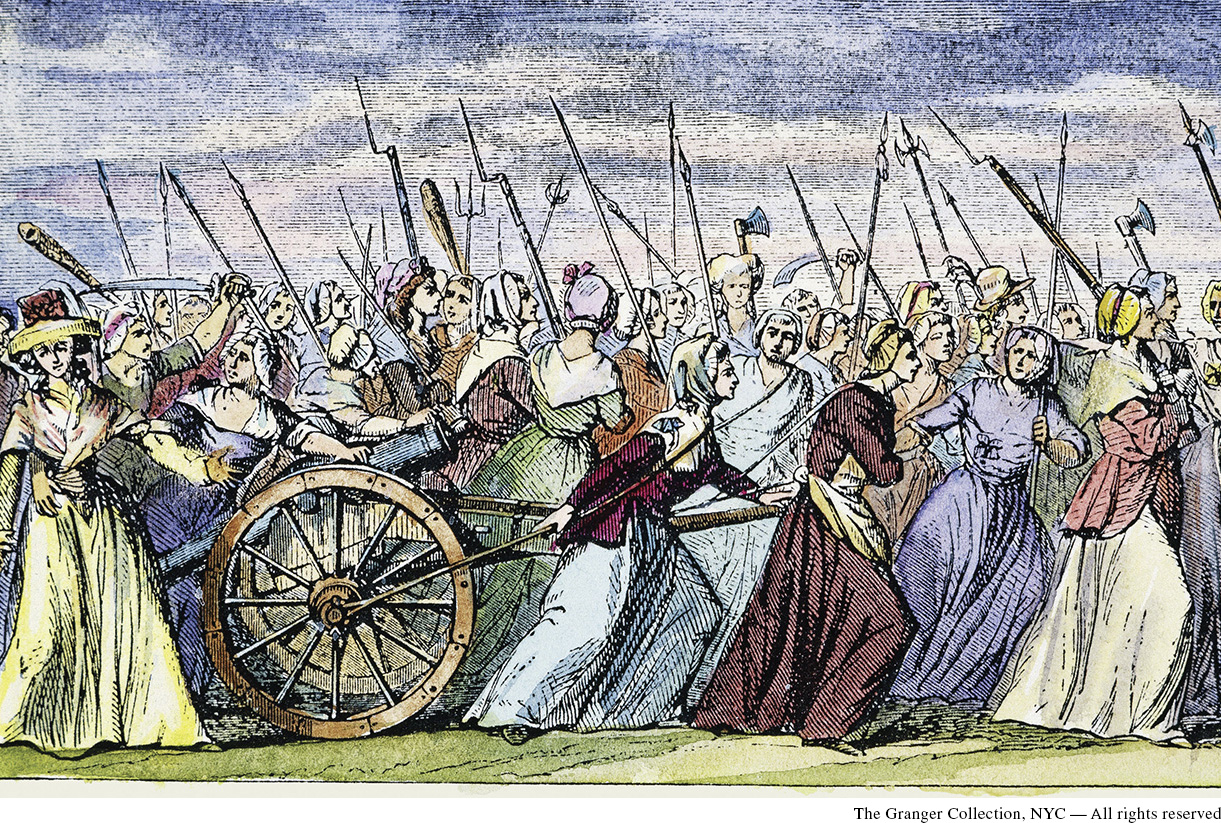Introduction for Chapter 19
Printed Page 606
Important Events
ON OCTOBER 5, 1789, a crowd of several thousand women marched in a drenching rain from the center of Paris to Versailles, a distance of twelve miles. They demanded the king’s help in securing more grain for the hungry and his reassurance that he did not intend to resist the emerging revolutionary movement. Joined the next morning by thousands of men who came from Paris to reinforce them, they broke into the royal family’s private apartments, killing two of the royal bodyguards. To prevent further bloodshed, the king agreed to move his family and his government to Paris. A dramatic procession of the royal family guarded by throngs of ordinary men and women made its slow way back to the capital. The people’s proud display of cannons and pikes underlined the fundamental transformation that was occurring. Ordinary people had forced the king of France to respond to their grievances. The French monarchy was in danger, and if such a powerful and long-lasting institution could come under fire, then could any monarch of Europe rest easy?
The French Revolution first grabbed the attention of the entire world because it seemed to promise human rights and broad-based political participation. Its most famous slogan pledged “Liberty, Equality, and Fraternity” for all. Even as the Revolution promised democracy, however, it also inaugurated a cycle of violence and intimidation, seen already in October 1789. When the revolutionaries encountered resistance to their programs, they tried to compel obedience. Some historians therefore see in the French Revolution the origins of modern totalitarianism—that is, a government that tries to control every aspect of life, including daily activities, while limiting all forms of political dissent. As events unfolded after 1789, the French Revolution became the model of modern revolution. Republicanism, democracy, terrorism, nationalism, and military dictatorship all took their modern forms during the French Revolution.
CHAPTER FOCUS What was so revolutionary about the French Revolution?
The Revolution might have remained a strictly French affair if war had not involved the rest of Europe. After 1792, huge French republican armies, fueled by patriotic nationalism, marched across Europe, promising liberation from traditional monarchies but often delivering old-fashioned conquest and annexation. French victories spread revolutionary ideas far and wide, from Poland to the colonies in the Caribbean, where the first successful slave revolt established the republic of Haiti.